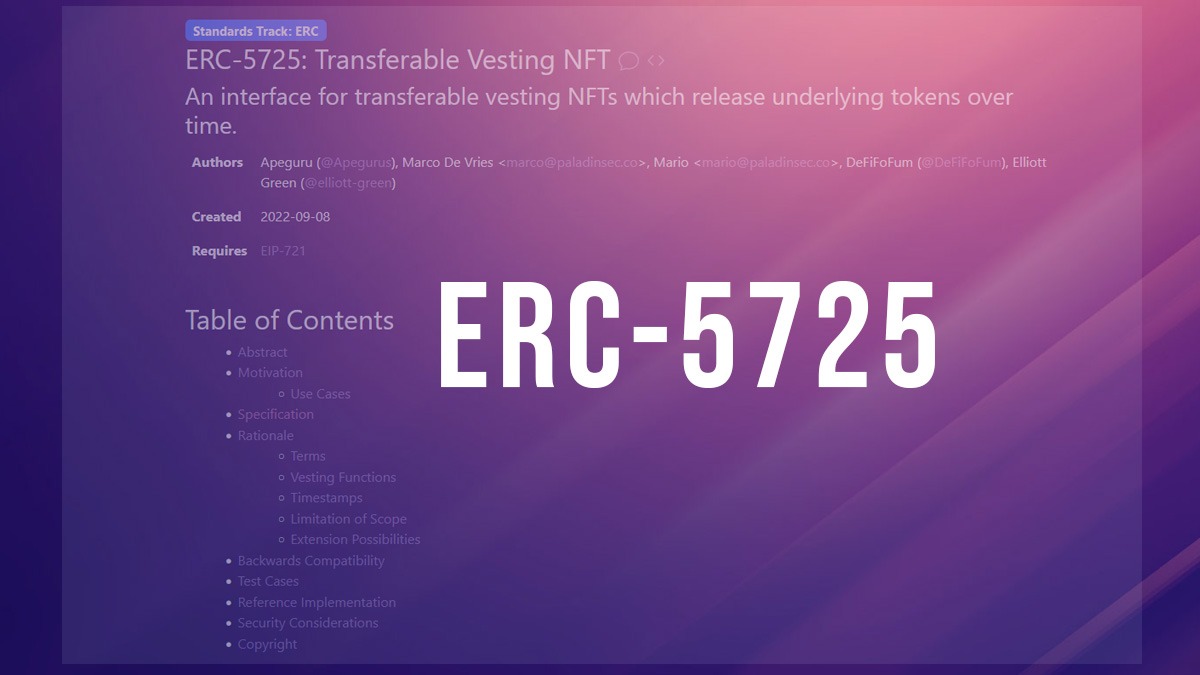
Introduction: Innovating Vesting with ERC-5725 In April 2023, ApeBond and Paladin proposed Ethereum's ERC-5725 token standard, revolutionizing NFT vesting mechanisms and addressing existing challenges.
Understanding Vesting Vesting, originating from corporate finance, involves token lockup, releasing after predefined conditions. In crypto, it prevents hasty token sales, but issues persist, including lack of standardization and fairness concerns.
The ERC-5725 Solution ERC-5725 extends ERC-721 for NFTs, introducing an API for vesting contracts. This standardizes vesting, ensuring transparent token distribution and resolving industry issues.
How ERC-5725 Works The ERC-5725 contract serves as an escrow account, holding assets subject to a predetermined vesting curve. It automatically distributes assets to the holder based on the unlocking schedule.
Use Cases and Integration ERC-5725 offers diverse use cases:
- Complex financial products using vested tokens as base assets.
- Blockchain registration of SAFT contracts.
- Services aggregating data on vesting NFTs for analytics.
Current Applications: ApeBond's Implementation ApeBond employs ERC-5725 in its Bonds product, allowing crypto projects to create transferable NFTs bought with LP tokens. Holders receive discounted base assets over a set issuance period.
Future of NFT Vesting ERC-5725 enhances liquidity for vested assets, enabling transferability. It simplifies customization, involving triggers and unlocking timelines, and allows third-party involvement. Adoption by industry players is crucial for widespread impact.
Conclusion: Shaping the Future While ERC-5725 is in early adoption stages, its potential to standardize vesting interfaces depends on broader industry acceptance. The standard has the power to reshape NFT vesting, unlocking liquidity and fostering a more flexible venture capital landscape.
https://www.zugtimes.com/unlocking-liquidity-erc-5725-standard-revolutionizes-nft-vesting/